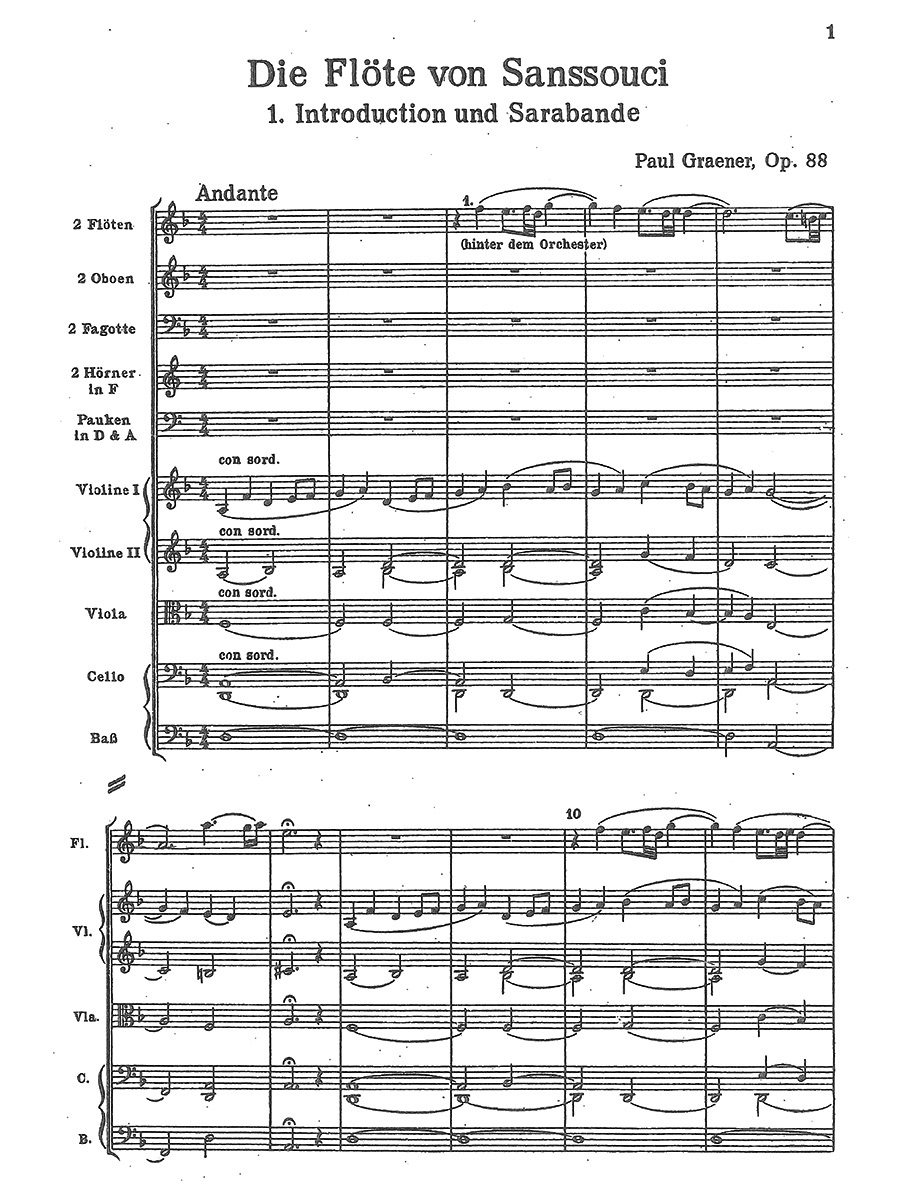Die Flöte von Sanssouci Op. 88, Suite for chamber orchestra
Graener, Paul
17,00 €
Preface
Paul Graener
Die Flöte von Sanssouci Op. 88
Suite for chamber orchestra
(b. Berlin, 11 Jan 1872 – d. Salzburg, 13 Nov 1944)
Preface
Paul Graener was a composer of some significance in Germany in the late nineteenth century through the mid-twentieth century. He spent some time working and teaching in London but returned to Germany where he taught at the Neues Konservatorium (Vienna), the Leipzig Conservatory, the Mozarteum (Salzburg), as well as serving as director of the Stern Conservatory in Berlin. It was at this post where he wrote “Die Flöte von Sanssouci” (1930).
While Graener is generally described as having written in a post-Romantic style, this work is a departure, very much at home as a Neo-classical offering. The movement titles (Sarabande, Gavotte, Air, Rigodon) as well as the compositional approach combine to create a work that defies the atonal, experimental aims of much of the music of the pre-World War II era. Graener was not alone, of course, in his attempt to capture the feel of the Baroque and Classical eras, as this was an interest of many of his contemporaries such as Paul Hindemith.
It is interesting to contemplate the role of the flute in this piece; its title suggests a flute concerto of some sort. However, it is not quite so, although the flute takes on a soloistic posture. The title of the piece is a variation of the title of a painting by Adolph Menzel (1815-1905) entitled “The Flute Concert of Sanssouci” (1850-52) and this appears to be the inspiration for the piece, both stylistically and programmatically.
Some scholars suggest that Graener was writing programmatic music in his later years and this piece may have been one of his early attempts at this compositional approach. Perhaps Graener was attempting to do the same as Mussorgsky in “Pictures at an Exhibition” in creating an aural image of a visual work. The painting by Menzel is the iconic image one associates with Frederick the Great as a flutist. In it he is pictured in the center of the canvas, in the brightest light, flanked by an audience on one side and members of the accompanying ensemble on the other. In deference to both the focus on the king in the painting as well as the status of the monarch, Graener assigns the flute I part particularly isolated and highlighted lines within the orchestral texture.
Read full preface / Komplettes Vorwort lesen > HERE
Score Data
| Score No. | 1775 |
|---|---|
| Edition | Repertoire Explorer |
| Genre | Orchestra |
| Size | 210 x 297 mm |
| Printing | Reprint |
